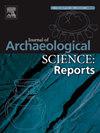确定英国和爱尔兰青铜时代中期掌状石斧的生命轨迹
IF 1.5
2区 历史学
0 ARCHAEOLOGY
引用次数: 0
摘要
本文介绍了对 102 件英国和爱尔兰青铜时代中期(约公元前 1500-1000 年)锡青铜垛斧进行化学特征描述、金相分析、金属制品磨损分析和损坏评估的结果。掌状石斧的作用尚不确定;它们很有可能为正在进行的森林清理提供了便利,但其复原状况的 "原始 "性质却往往是道听途说。通过对基本冶金学的深入了解,并结合之前对仿制掌状石斧的实验,可以对磨损特征和使用强度进行更细致的评估。这样,再加上现有的背景数据,就可以确定在考古记录中发现的史前掌状石斧的生命轨迹,突出了为功能性使用做准备和最低限度应用的共同叙事,在沉积时更倾向于保存而不是破坏,以及在其生命历程中呈现出的相当大的变异性。本文章由计算机程序翻译,如有差异,请以英文原文为准。
Establishing life trajectories for British and Irish Middle Bronze Age palstave axes
This paper presents the results of chemical characterisation, metallography, metalwork wear-analysis, and damage assessment conducted on 102 British and Irish Middle Bronze Age (c. 1500–1000 BCE) tin-bronze palstave axes. There is uncertainty regarding the role of palstave axes; they very likely facilitated ongoing forest clearances, yet expressed often in hearsay, is the ‘pristine’ nature of their recovery condition. A better appreciation of underlying metallurgy, combined with insight from prior experimentation with replica palstave axes, has allowed a more nuanced evaluation of wear characteristics and use-intensity. This, alongside available contextual data, has permitted the life trajectories of prehistoric palstave axes found within the archaeological record to be determined, highlighting a common narrative of preparation for, and minimal application in, functional use, with preservation favoured over destruction at deposition, as well as the considerable variability presented within their life histories.
求助全文
通过发布文献求助,成功后即可免费获取论文全文。
去求助
来源期刊

Journal of Archaeological Science-Reports
ARCHAEOLOGY-
CiteScore
3.10
自引率
12.50%
发文量
405
期刊介绍:
Journal of Archaeological Science: Reports is aimed at archaeologists and scientists engaged with the application of scientific techniques and methodologies to all areas of archaeology. The journal focuses on the results of the application of scientific methods to archaeological problems and debates. It will provide a forum for reviews and scientific debate of issues in scientific archaeology and their impact in the wider subject. Journal of Archaeological Science: Reports will publish papers of excellent archaeological science, with regional or wider interest. This will include case studies, reviews and short papers where an established scientific technique sheds light on archaeological questions and debates.
 求助内容:
求助内容: 应助结果提醒方式:
应助结果提醒方式:


